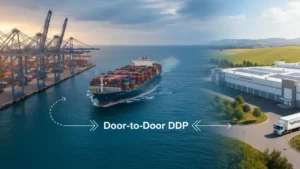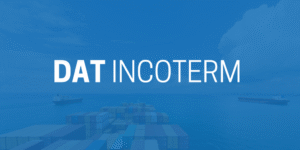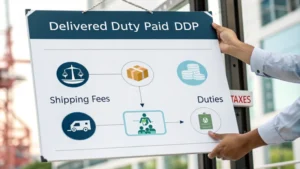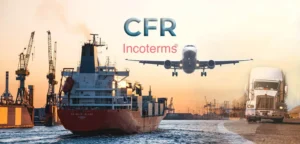Anyone involved with freight shipment certainly has encountered terms like bills of lading (BOL) and freight bill. These two terms are used interchangeably, though they differ in meaning and purpose. Particularly, to those who are supposed to issue freight bills and bills of lading, they need to know how a freight bill differs from a bill of lading.
Failure to differentiate between them could cost you a lot of money. For this, it is good to outsource the services from a Freight Payment and Audit, FPO company to handle your freight billing needs effectively. Let’s delve into the differences between the two documents, but before that, let’s define each term distinctly.
What is a Bill of Lading?
A carrier, either in the form of a shipping company or a freight forwarder, issues a legally binding document called the Bill of Lading, or BOL, to the shipper. The BOL is both a receipt for the goods being transported and a carriage contract between the shipper and carrier, which includes all shipment details; the description of goods shipped, including commodity type, quantity, and condition.
Origin and Destination:
The bill of lading states the origin and destination of shipment.
Terms of Shipment:
This documents the terms and conditions of the transportation agreement to be utilized, including but not limited to any special delivery instructions or requirements.
Responsibility for Payment:
BOL may identify who will be responsible for paying the freight charge: the shipper, the consignee, or some other third-party source.
Liability for Loss or Damage:
The bill also contains the provisions usually seen about the liability of the carrier for loss or any damage to the goods in transit.
Signature and Date:
The Carrier or the person authorized by him shall have to sign and date the bill of lading, presenting the goods received.
The Bill of Lading is important at the point of shipment, for it constitutes the evidence of shipment and establishes the terms of agreement between the shipper and carrier. It is usually required for goods release at destination and, sometimes, as a negotiable instrument in international trade transactions.
What is a Freight Bill?
The Freight Bill is basically a carrier invoice or freight invoice, with all the charges for the transportation services extended, provided to the shipper or consignee by the carrier. While a Bill of Lading is principally a contract of carriage and receipt for the goods, a Freight Bill is actually a demand for payment from the carrier regarding financial interest in the shipment.
Key components of a Freight Bill include:

Billing Information:
It contains the name and address of the shipper, consignee, and carrier and reference numbers or purchase orders.
Description of Charges:
It provides a list of different transport costs in relation to the freight charges dependent on weight, volume, distance, and modes of transport. This might include any additional charges or surcharges, such as fuel surcharges, accessorial charges, or handling fees.
Payment Terms:
These also detail the due date for payments, along with the type of payment acceptability. Taxes and Duties: This may include any tax, duty, or other charges imposed by the government with respect to the shipment.
Shipping Details:
While not in as much detail as would a Bill of Lading, the Freight Bill may contain basic information related to the shipment, such as the places of origin and destination and the shipment date.
Terms and Conditions:
This may include terms and conditions relative to the limitation of liability or procedure for dispute resolution, which may be applicable to both payment and transportation services, as outlined on the Freight Bill.
A correctly filled-out Freight Bill is what keeps shipping and logistics running in a seamless and continuous manner for the effective operation of various business functions. To this effect, it forms a very critical basis for invoicing and eventual payment by the shipper against services delivered by the carrier. Freight Bills should be processed with the highest level of accuracy and speed possible to ensure very smooth and efficient supply chain operations.

Differences between Freight Bill and Bill of Lading
Let’s unpack the key differences:
Mission:
BOL: Serves as both a contract of carriage and a receipt for your goods. It is essentially your shipment’s legal passport!Freight Bill: This is all about the bucks. It specifies the charges you have incurred for the services offered in transporting your goods.
Legal Muscle:
BOL: This big gun is a legally binding agreement between you and the carrier, spelling out your shipment terms and responsibilities.Freight Bill: It is an invoice for payment and not based on legal requirements.Contents:
What’s Inside:
BOL: It provides all the relevant information of what one is shipping, transportation terms, and carrier responsibilities. It is like a detailed itinerary for your cargo!Freight Bill: This is the document that itemizes the transport charges-freight, fees, taxes, everything included.
Legal Weight:
BOL: If something goes wrong, this is the legal document used to prove liability and responsibility. Your legal shield!Freight Bill: For billing and payment more than for any legal purpose.
Timing is Everything:
BOL: Released at shipment or shortly after, serving as your receipt and contract. Think this as being the boarding pass for your goods.Freight Bill: Arrives after the delivery has been completed and itemizes the final transportation costs. Like paying the tab after a smooth ride.

Freight Bill or Bills of Lading? What’s the Difference?
Among all the critical documents involved with the shipping and logistics industry, freight bills and bills of lading have their distinctions in purpose and information each respectively carries.
1. Purpose:
A Bill of Lading, commonly referred to as a BOL, is a legal document supplied by a carrier to the shipper, showing acknowledgment that the carrier has received goods ‘in’ to be shipped and outlining in agreement the terms for their transportation. It represents both a receipt of carriage and a contract of carriage.
On the other hand, Freight Bill is merely an invoice presented by the carrier to the shipper or consignee which shows the charges for the services rendered for carrying the goods. Its main purpose is to represent a record of the financial transaction of the transport deal.
2. Content:
A Bill of Lading should, in general, contain full particulars relative to the description of goods shipped, such as the description and quantity of goods shipped; marks and numbers; order and reckoning; shippers’ marks and numbers; condition of goods at the time of shipping. Origin and destination of shipment are also commonly included. The document usually informs about the terms and conditions of transportation, liability upon loss or damage.
Freight Bill itemizes the charges for transportation services, which includes freight charges, additional fees, taxes, and surcharges. It may also show basic shipping information, but its main focus is on the billing information and terms of payment.
3. Legal Implications:
The bill of lading has a deep legal meaning and is very often used as evidence in case of disputes or claims arising concerning the shipment. This document establishes a contract between the shipper and the carrier, defining the responsibility and liability of each party in this transaction.
Contrarily, the Freight Bill is legally binding in nature for the purpose of billing, but it mainly allows the client to settle their dues over availed transportation services. It may be used for financial transactions and accounting but usually does not come under legal connotation as much as would a Bill of Lading.
Basically, both have important roles in shipping and logistics. A Bill of Lading serves as a legal contract and, at the same time, as a receipt of the goods, while the Freight Bill is basically about the billing and payment for transportation services.
Freight Billing Terms
Freight billing terminology is as follows: These are the additional terms and agreements that apply to the cost of shipping goods. These are the terms that determine how shipping charges are to be paid, by whom, and at what time. Some common terms include “prepaid,” in which the shipper pays the freight charges before shipment, and “collect,” in which the receiver pays for the shipment upon delivery. Still other terms can be applied to specify fees for additional services such as handling or storage. Understanding these terms will not only save shippers and receivers from possible confusion, but it will also guarantee orderly transactions in the shipping process.

Freight Invoice Vs Bill Of Lading
Although the freight invoice and the bill of lading are both key documents in shipping, they have completely different functions. A freight invoice is sent by the carrier to the shipper for the charges one has to incur for the transportation of goods. It includes vital information such as the shipping cost, weight, and other added fees. For Freight Forwarders that handling shipping from China, this is a necessary document for the record and account for all the costs.
A bill of lading, however, is a legal document serving as an acknowledgment or receipt of shipment. It would contain information on the consignment, like the kind of goods, destination, and mode of transportation. To summarize, a freight invoice is about payment, while a bill of lading is about confirming the details of shipment.
Final Takeaway
In essence, while freight bills and bills of lading share similarities, they serve distinct purposes. A Bill of Lading (BOL) holds significant legal weight, serving as a contract and acknowledgment of goods received for shipment, whereas a freight bill functions primarily as an invoice detailing shipping charges and associated fees.
Navigating the intricacies of logistics paperwork can be daunting. For businesses seeking to streamline their operations and alleviate the burden of administrative tasks, enlisting the services of a Freight Payment and Audit (FPO) company, such as DDC FPO, can be invaluable. These specialized firms excel in managing back-office functions, freeing up valuable resources such as time and manpower while enhancing accuracy and efficiency.
By outsourcing tedious paperwork to FPO experts, businesses can optimize their freight processes, reduce errors, and ultimately save costs. Reach out to a knowledgeable professional today to explore how FPO services can benefit your organization’s logistics operations.
Keep in mind, a smooth shipping from China to Us Begin with the right paperwork. TopShipping will ensure your BOL is accurate, complete, and readily available to avoid delays and ensure a seamless customs clearance process. For professional guidance on managing your BOL and other shipping documents, contact us today!















